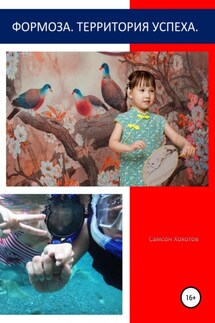Formosa. Country of success - страница 2
There is an assumption that the first European who saw the island was Dutchman Jan Huygen van Linschoten (1563 – 8 February 1611).
In 1592 being a navigator (and passing by an island with lush greenery and mountain peaks on a Portuguese sailing ship), he marked it in the logbook as "Formosa".
"Taiwan" has been in use since the early 17th century. In the early 17th century, the Dutch brought buffaloes to Taiwan. Thanks to this, the natives began to use draught cattle.
In 1622 the island came under the control of the Dutch from the East India Company. From 1626, Taiwan started to arouse burning interest in Spain, which intended to send its warships to the shores of the "wonderful" island. Moreover, Spain has managed to gain a foothold in northern Taiwan.
In 1626 Spain sent a fleet of warships from Manila to northern Taiwan and established a small colony named "Spanish Formosa". Fort San Salvador was established to counterbalance Dutch rule in southern Taiwan and protect Spain's interests in the shipping route between China's Fujian province and Manila in the Philippines.
However, in 1642, after several years of battles, the fort was handed over to the Dutch.
The unfolding struggle between Spain and Holland for the possession of the island ended in 1642 to satisfy the interests of the latter.
In September 1652, a major uprising of the local aboriginal population under the leadership of Guo Hua broke out against the Dutch colonialists. Inspired rebels tracked scattered groups of Dutchmen appearing in different parts of the island, fighting with them to the death.
There is a mention of a large pit, dug by the rebels in the north of the island and covered up with poles, turves and grass, into which they managed to lure a group of Dutch sailors.
The pit was then re-filled with earth and twigs. Ultimately the forces were unequal, the rebels crushed, and only the northern and southwestern regions of Taiwan remained under the control of the East India Company.
Fort San Salvador has not disappeared without a trace. And we owe this to archaeologists.
In the city of Jilong, a Spanish-Taiwanese expedition found Fort San Salvador, built during the Spanish occupation of Taiwan in 1626-1642. The researchers discovered some Neolithic artefacts, such as bones and shells, plus some items from later periods. A porcelain vial from the Qing Dynasty and which was intended for medicine particularly caught the
attention of the archaeologists. Due to the excavations, the previously planned construction of public parking lots has been discontinued, according to the Mayor of Jilong, Lin Yu-chan
. He noted that these archaeological excavations were very significant. “This is a truly exciting moment in the history of Jilong,” concluded the Mayor.
Arable farming, cattle breeding, crafts, hunting
Horticulture began to develop.
The most widespread crops were cereals (millet, rice), legumes (peas, various beans), and tuberous species (taro, sweet potatoes, yams).
The production of irrigated rice, sugar cane, onions and ginger increased throughout the 17>th,18>th, & 19>th centuries with the crops being harvested twice per year.
The Dutch also introduced the local people to the technology of growing tobacco.
The communal fields were cultivated by women under the guidance of certain men who were known as the “elders of the




![Bo][ing Day истребить «колхозника»](/uploads/covers/fe/bo-ing-day-istrebit-kolhoznika.jpg)



